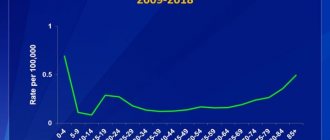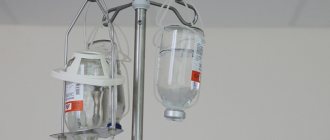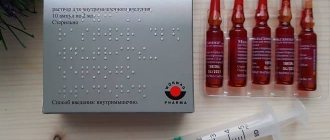What you need to know about using testosterone supplements?
Testosterone injections are a hormonal treatment.
This hormone is present in both men and women, but levels are naturally higher in men.
Its main use is to treat sexual dysfunction in men and postmenopausal symptoms in women with testosterone deficiency.
Transgender men can also use testosterone injections as a masculinizing therapy.
Testosterone injections are safe for many people, but may have side effects that vary depending on the reason a person is using the injections.
Before recommending long-term testosterone therapy, you should make sure you understand and evaluate the risks and benefits.
Therapy for low testosterone levels in men
Low production of testosterone by the testes is called hypogonadism.
Low testosterone levels can have negative consequences.
Symptoms of low testosterone in men include decreased sperm count, decreased bone or muscle mass, increased body fat, and erectile dysfunction.
The normal blood level of total testosterone in healthy adult men is > 17 nmol/L.
When treating hypogonadism, testosterone therapy may have the following benefits:
- improved sexual function
- increase muscle mass and strength
- improved mood
- better cognitive function
- possible reduction of osteoporosis
It is important to note that this therapy treats the symptoms of low testosterone, not the underlying cause.
Anyone who suspects they may have low testosterone levels can see their doctor for a diagnosis.
However, symptoms are quite common and can be caused by other conditions or lifestyle factors.
Not all men with low testosterone need treatment, and it is not always safe.
For more detailed information, you can contact Evgeniy Viktorovich for an in-person or online consultation.
Testosterone therapy in women
The use of testosterone in women is a more controversial topic than its use in men.
Normal levels of total testosterone in healthy adult women are 0.29–1.67 nmol/L.
Low testosterone levels in women can cause fertility problems, irregular periods, vaginal dryness and low sex drive. Despite this, doctors do not often recommend testosterone injections to treat low testosterone levels in women because they may have a masculinizing effect.
However, doctors may recommend testosterone therapy to help with hypoactive sexual desire disorder in postmenopausal women.
Research has not supported their use for other signs and symptoms that people may experience after menopause, including anxiety, mood changes, weight gain and decreased bone density.
Masculinizing hormone therapy
Testosterone therapy allows people to develop a more masculine appearance.
Transgender men may use testosterone injections as part of their gender transition.
Testosterone therapy helps a person develop masculine sexual characteristics and reduce feminine characteristics, and this may result in any of the following changes:
- changes in emotional and social functioning
- facial hair grows
- increase in body hair
- increase in acne
- deeper voice
- receding hairline with male pattern baldness
- changes in fat location
- increase in muscle mass
- absence of menstrual periods
Testosterone treatment regimens are similar to those used to treat hypogonadism in men.
Taking testosterone injections once a week may be the best way to maintain levels of this hormone.
Injectable testosterone preparations can be of several types.
These include:
- Testosterone cypionate (depot testosterone)
- testosterone enanthate (shorter-acting form)
- Testosterone undecanoate (long-acting drug)
How to use them?
When you receive an injection of testosterone, the hormone enters the body directly through the muscle bloodstream or through slow release from intramuscular stores.
You can choose between two methods of using the drug:
- self-administration of the drug at home (administration of short- and medium-acting drugs)
- injection of the drug into the gluteal muscle during a doctor's visit (injection of long-acting drugs)
When receiving testosterone injections, people usually visit their doctor every 2-3 months to monitor testosterone levels and prevent complications.
Treatment can be lifelong or short-term, depending on the patient's condition and treatment goals.
It is safe?
Testosterone injections can be safe if the patient follows the doctor's instructions. However, research has linked testosterone therapy to several side effects and possible complications.
Possible negative effects of testosterone therapy may include:
- increased risk of cardiovascular complications (if therapy is started for existing diseases of the cardiovascular system)
- worsening of symptoms in the lower urinary tract (growth of prostate adenoma, if the transformation of testosterone into dihydrotestosterone is not prevented)
- polycythemia, a rare type of blood cancer
- increased risk of venous thrombosis
Some people may have an allergic reaction to testosterone injections.
For example, testosterone undecanoate may cause a severe allergic reaction or breathing problems after injection. Symptoms may include breathing problems, dizziness and skin rashes.
Other forms of testosterone, including testosterone enanthate, may increase blood pressure, which may increase the risk of stroke or heart attack.
People who have had a stroke, heart attack, heart disease or high blood pressure should tell their doctor before starting testosterone injections as they may be at higher risk of complications.
If someone experiences any of the following symptoms after a testosterone injection, they should seek emergency medical attention:
- dyspnea
- slow or difficult speech
- chest pain
- weakness or numbness in an arm or leg
- pain in the arms, neck, back or jaw
- dizziness
- pallor
If a doctor prescribes testosterone injections for a teenager to treat constitutional delays in growth and puberty, the goal will be to achieve an accelerated growth spurt during puberty.
Summary
You may be given testosterone injections to restore your testosterone levels. It does not cure the underlying condition, but may help relieve some symptoms.
Women can also use these injections to treat sexual dysfunction that occurs as a result of body changes after menopause.
You should be aware of the possible serious complications of testosterone use, both in the short and long term.
It is important to always follow your doctor's instructions to reduce your risk.
What is testosterone propionate?
Testosterone propionate is a “short-lived”, synthetic, that is, chemically synthesized, anabolic androgenic steroid.
It ranks second in demand among athletes taking anabolic steroids.
Slang name: “Propik”, “Prop”, propionate
It is worth noting that Testosterone Propionate is the first testosterone that was synthesized and commercially released for medical use from 1937 to 1960.
In bodybuilding, testosterone propionate, due to its characteristics, is used mainly during the “cutting” period, but is excellent for building muscle mass and strength, with some reservations, which will be discussed below.
Observing the statistics of search queries, I very often find the request “buy testosterone propionate tablets”
I will probably disappoint someone, but testosterone propionate is only available in injections. Propionate, like any other testosterone, (except methyltestosterone) does not exist in tablets. And you should give up fruitless attempts to find one.
Indications for injections
Injections to increase testosterone in men are indicated in the following cases:
- hypogonadism, delay and deviation of puberty, underdevelopment of the genital organs;
- infertility, impaired spermatogenesis;
- mental changes, hormone deficiency;
- impotence, decreased libido, erectile dysfunction during reproductive age.
Injections are prescribed with caution in old age and adolescence, with asthenic physique, osteoporosis, and obesity. Contraindications for therapy:
- intolerance to drug components;
- breast cancer, prostate cancer, gynecomastia;
- atherosclerosis, diabetes mellitus, hypercalcemia;
- bleeding disorders;
- nephrotic syndrome;
- cardiovascular, renal, liver diseases.
Signs of low testosterone
From the age of 35, hormone levels drop by 1-2% per year. This is a natural process, but sometimes it becomes pathological. Physiological symptoms of a low level are:
- depression, loss of interest in the world;
- impotence, decreased libido;
- obesity;
- gynecomastia, loss of body hair, feminization;
- decreased muscle mass;
- irritability;
- absent-mindedness, memory impairment.
Effective testosterone preparations for injections
Injections are given intramuscularly, deeply, preferably in a hospital setting. Characteristics of the drugs:
| Types of drugs/Characteristics | Short validity period | Medium validity | Long validity |
| Time of action | Instantly, the effect lasts 3 days | Removed in 2-4 weeks, done every other day or every three days | 10-12 weeks |
| Peculiarities | They inject every day | Normalize sexual desire, vegetative-vascular and metabolic health | Inject once every two months |
| Advantages | Allows you to test the body for the absence of negative reactions or side effects from use | Corrects age-related changes in testosterone synthesis and mental state | They act gradually. This minimizes side effects |
| Flaws | Inconvenient for constant use, severe pain, not suitable in combination with anti-tuberculosis drugs | Prescribed after a course of short-term testosterone, if there were no negative consequences | They are expensive |
| Examples of drugs | Testosterone propionate, Andriol | Sustanon, Androgel | Nebido, Omnadren |
Why do you need testosterone injections for men?
The hormone in men is produced by special cells of the testes, the adrenal cortex. It performs the functions:
- regulates the level of sexual desire;
- normalizes potency;
- affects mood, sexual behavior;
- activates the growth of muscle mass (important in bodybuilding instead of anabolic steroids), strengthens bone tissue;
- takes part in metabolism and the formation of the emotional background.
The level of the hormone depends on age, but the average concentration is 11-33 nmol/l of blood. When the content decreases, potency and sexual desire are impaired.
Deficiency results in obesity, osteoporosis, development of cardiovascular diseases, and impotence. The reasons for the lack of substance are:
- sedentary lifestyle;
- poor nutrition;
- excess weight;
- irregular sex life;
- alcohol abuse, including beer;
- stress;
- lack of sleep;
- somatic diseases: prostatitis, diabetes, hypertension, leukocytosis, cholesterolemia;
- taking certain medications: Carbamazepine, tetracyclines, Veroshpiron, glucocorticosteroids, magnesium sulfate;
- unfavorable environmental conditions.
How and how much to inject testosterone propionate?
The period of maximum effective action of propionate is one day, which suggests that you should inject propionate at least every other day. Ideally, you should inject propic every day, which, at least psychologically, is not convenient. After all, not everyone is ready to “punch” their ass every day.
And what's the point? For mass gain, it is much easier to use any of the “long-lasting” testosterone esters.
Propionate is injected mainly into the large muscles of the body - the gluteal, thigh muscles. Less commonly, testosterone propionate is injected into the deltas.
By the way, few people know that propionate can be administered subcutaneously, i.e. into the fat layer on the abdomen. An insulin syringe is used for this.
The recommended basic dosage for beginners is 50 mg, every other day or every day. Experienced athletes use 100 mg. every day and above.
I do not consider the use of propionate to gain muscle mass justified, since testosterone ethantate is best suited for these purposes.
But for “drying”, advanced and competitive athletes, propionate is best suited.
Also, testosterone propionate “must feb” is a “exit” from the course where “long” steroid esters are used.
In such cases, propionate begins to be placed 2-3 weeks before the long ether is expected to “complete its work.”
The use of testosterone propionate in this way allows you to accurately understand when you need to start PCT, because propionate will be completely eliminated from the body a maximum of 4-6 days after the last injection, and with “long” esters the period of complete elimination is difficult to calculate, because it “floats” from 3 weeks or more.
To accurately understand when to start PCT, you need to get tested for total testosterone. The analysis is carried out when you have approximately calculated that the ether has already completed its work in the body.
We described what values of your own test you should focus on in the article “How to conduct PCT correctly”
Starting PCT when the dough you injected is still active in the body does not make sense and will not bring any benefit, since restoration of the hypothalamus-pituitary-testes arc will not take place in this case.
As a result, PCT will be, at a minimum, incomplete.
You won't recover. That is, you will not reach normal levels of your own testosterone, which will subsequently lead to a “collapse” of muscle mass and strength.
In addition, the use of propionate at the “exit” of the cycle will allow us, for several more weeks after the ester, to maintain high working concentrations of testosterone in the blood, and in fact finish the course with a better result than we would have simply canceled the long ester and waited until it “ will fizzle out."








